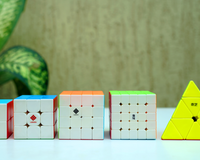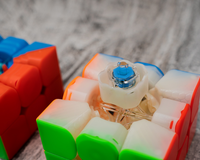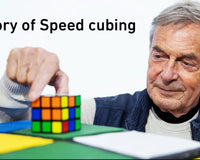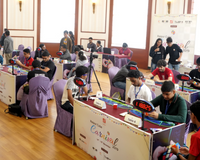In 3x3 speedcubing, while using the layer-by-layer or the CFOP method, most of the tutorials/ procedures available online use the white colour as the base to solve the cube. Why do cubers think it’s the perfect way to solve cubes? Why can’t we start with an orange side base? Or in fact, why can’t we start with any colour as the base at all? This is the basis of Colour Neutrality (CN); it is simply, the ability to start solving a Rubik’s Cube from any coloured side and having the same speed of execution for any coloured side as well.

The main reason why many speedcubers start with the white cross (base) is to have a very high TPS (Turns per Second) or look ahead while executing their F2Ls. It is, in general, easier/ faster to spot white corner pieces and its corresponding F2L edges, compared to any other colour. Hence, many speedcubers do exceptionally fast when doing white cross, but are relatively very slow when doing the same with other colour crosses. This type of getting used to only a certain colour might arise because they have practiced, for the longest duration, using only white crosses but not with other colour crosses.
Why should CN be incorporated?
Another question that needs to be asked is, if we can get similar speeds with all colour bases during F2Ls, why do we need the CN Skills at all? Well, the main effect of CN can be observed during the cross execution. When we are Colour Neutral, the formation of a cross can occur at any coloured side, opening up many more options. This can significantly improve our cross timings and open up further possibilities, like ex-cross, double ex-cross, etc.
Methods to improve Colour Neutrality:

To achieve Colour Neutrality, certain basic training exercises can help. We need to become accustomed to the F2L cases, for other colours as well. This means, practicing more and more F2L cases for other colours as well. This can be timed, or untimed, as both help to improve the familiarization of the other colours. Following this, we can start to incorporate CN in our everyday solves, whenever possible.
Doing the Metronome practice, that is done to improve Look Ahead can also be applied in this case, as it helps to improve the familiarization with other colours. If done rigorously and regularly, there will be noticeable changes in Colour Neutrality in your solves. But do remember, just like the transition from beginner’s method to F2L, this will also be difficult and irritating, but if you keep to it, then results are most certainly possible.
CN can be extrapolated to bigger puzzles as well: during Yau for 4x4, 5x5 or during advanced edge pairing in 5x5, etc. The same practice methods can be applied to the bigger puzzles as well, which will improve your overall timings.






























